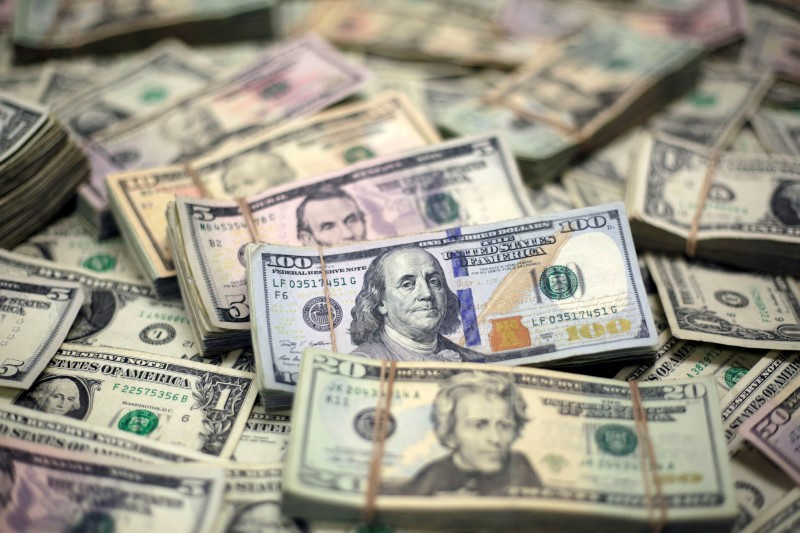TOKYO (Reuters) – The dollar hovered near a one-week low on Wednesday as traders bet U.S. consumer price data later in the day will keep the Federal Reserve on course to cut rates next month, while sterling eased after softer-than-expected inflation numbers.
New Zealand’s dollar dropped more than 1% after the Reserve Bank of New Zealand reduced the key cash rate and flagged more cuts to come in a sharp dovish shift.
Traders were largely cautious ahead of U.S. inflation data at 1230 GMT (8:30 a.m. ET), which is expected to show consumer prices increased 0.2% in July, on a month-on-month basis, following a 0.1% decline a month ago.
The dollar index – which measures the greenback against other major currencies – dipped 0.1% to 102.52, after slumping 0.5% on Tuesday when a slower-than-expected rise in producer prices reinforced hopes of a U.S. rate cut next month.
The dollar’s weakness helped the euro hit a seven-month high of $1.1010, surpassing the high hit during the market turmoil on Aug. 5.
“Traders are positioning for a weaker CPI number, which of course (poses) a risk that if the CPI comes in line or little bit with an upside surprise, the dollar is going to go strong again,” said Volkmar Baur, FX analyst at Commerzbank (ETR:CBKG).
“If it surprises on the downside, it shouldn’t be swaying the Fed in the direction of a 50-basis point cut because inflation is a lagging indicator and a somewhat weaker CPI wouldn’t be a signal of an impending recession.”
Traders had been widely expecting a rate cut in September before the producer price data, and ramped up bets for a super-sized 50 basis-point cut after the release to 52.5% from 50% a day earlier, according to CME’s FedWatch Tool.
STERLING DIPS, KIWI SLIDES
Sterling slipped 0.2% to $1.28415 after data showed British consumer price inflation increased for the first time this year in July, but the rise was smaller than expected as services prices – closely watched by the Bank of England (BoE) – rose less rapidly.
Financial markets priced in a 44% chance of a quarter-point BoE rate cut in September, up from 36% before the data was released.
“We would say it’s still consistent with a stabilisation in inflation, not a further disinflation. We’re looking for the BoE to be more cautious than the Fed and the ECB because it seems inflation in Great Britain is going to be a bit more stubborn and the economic cycle seems to be picking up again,” Commerzbank’s Baur added.
The kiwi fell as much as 1.2% after the Reserve Bank of New Zealand cut the cash rate by a quarter point, its first easing since early 2020 and coming a year earlier than its own projections. The currency was last trading 1.1% weaker at $0.60060.
“The RBNZ has completed a 180-degree dovish backflip, cutting interest rates to bring much-needed relief for households and businesses just three months after it raised the possibility of additional rate hikes,” said Tony Sycamore, a market analyst at IG.
Meanwhile, Japanese Prime Minister Fumio Kishida’s decision to not run for reelection in his party’s leadership race next month had little effect on markets, analysts said.
The yen weakened slightly against the dollar, which was up 0.2% at 147.20 yen.

“Probably the impact on the economy and financial markets should be relatively limited because Mr. Kishida’s policies, if I try to characterize them, are really wide ranging and not focused on specific themes,” said Masayuki Kichikawa, chief macro strategist at Sumitomo Mitsui (NYSE:SMFG) Asset Management.
“The big question would be who would be next. That will be more important.”
To read the full article, Click Here

